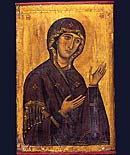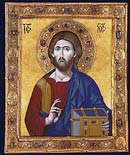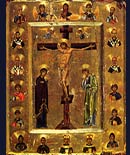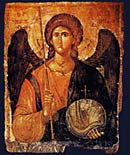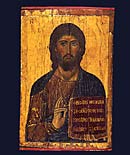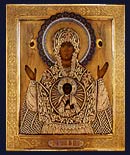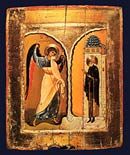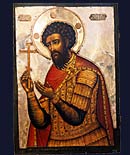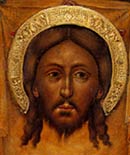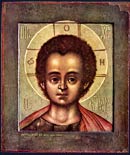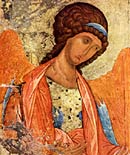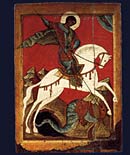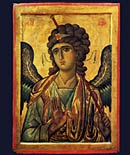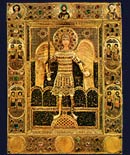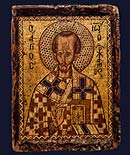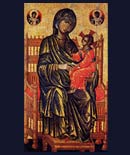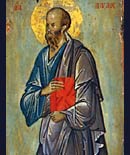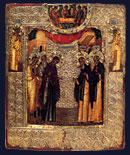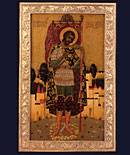Ikon History - Medieval Balkan States
In the sixth century massive invasions of Slav immigrants virtually ended urban life in the Balkans. Churches, villas and cities from Macedonia to the Pelleponesus where devastated and abandoned. The arts, such as ikon painting continued, but the level of artistry greatly declined and most artists who continued their craft fled to Constantinople, the Islands of the Aegean Sea, or Thessaloniki. During the Iconoclastic controversy of the eighth and ninth centuries maritime Greece began a center of resistance to the edicts against images from Constantinople. At the same time as the restoration of icons in 843, Greece and the Balkans were making tenuous economic and cultural progress. Regional power centers began to build churches and monasteries and these were decorated with ikons. Patrons who were looking for the finest work naturally turned to the capital city, Constantinople, for artists and precious pigments for painting. Some of these teams of painters stayed on to found their own regional schools of painting, usually associated with local courts, bishops and monasteries. During the 12th and early 13th centuries the Balkans appear to have experienced a tremendous increase in economic properity and the number of monuments increases correspondingly.
The large ikon of the Annunciation at upper left was brought to the lakeside Macedonian city of Ohrid, by Abbot Galaktion from the Monastery of the Virgin "Saviour of Souls" in Constantinople during the reign of the Emperor Andronikos II (1282 - 1328). It is contempory with the famous mosaics of the Chora Church in Constantinople. There was constant traffic accross the Balkans and the churches were in close contact with one another. Travellers to Constantinople usually brought back with them many precious things from the Imperial city. Ikons were usually among these treasures.
The ikon shows the Archangel Gabriel striding toward the seated Virgin, who is spinning red thread. The arc of the Angel's wing leads from heaven directly through his arm to Mary. From above the Holy Spirit desends upon her. Mary sits on a golden throne, set with red silken pillows within a columned niche. The Theotokos is wrapped in an Imperial purple mantle over a dark blue dress. She wears the scarlet slippers reserved exclusively for Byzantine Emperors and Empresses. The Angel wears classical garments which have their echo in 5th century art and the painting resoundly mirrors classical traditions. The Paleologian style of the ikon is unmistakable in the excessive modelling of the figures, the electric highlights and the bulging heaviness of the Angel's body.
The ikon at center is a miniature of the Annunication made of mosaic set in wax. The cubes of the mosaic are very small and made of lapis, gold, silver, semi-precious stones and other materials. Ikons of the Annunication were a delight for ikon painters because the subject gave them an opportunity to experiment with festive colors, fanciful architecture and new drapery forms within the guidelines of the ikon type. Even within the minute size of this ikon the artist has managed to place a classical collonade and inlaid floor in the scene.
There is great debate amoung the Balkan nations about the national origin of artists who worked during the Golden Age of Balkan painting in the 13-15th centuries. It is often extremely difficult to assign nationalities to many of the artists of the time, for few details are known of their lives. However, the best work in the medieval churches of Serbia and Macedonia show a level of inspiration and techinque which is equal to anything being done at the time in Europe. The ikon of Christ at lower left is from the Serbian monastery of Chilandari on Mt. Athos in Greece. It represents many of the characteristics of the Serbian school - attention to realism, a harmonious, muted range of colors and a monumental style. The explosion of Balkan art was set back by the conquest of the Serbian Empire by the Ottoman Turks in the late 14th and 15th centuries.
Next chapter: Golden Age of Russian Ikons
